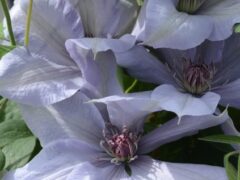
‘Bernadine’ Clematis
Clematis ‘Bernadine’
This stunner produces masses of large light blue flowers with contrasting red anthers. It’s amazing … Continued
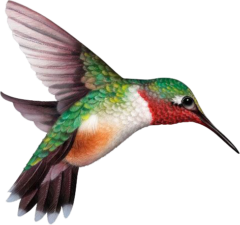 Hummingbirds, bees and butterflies are well-known pollinators, but there are thousands of unsung pollinator heroes, including moths, wasps, flies, and beetles, many mammals, birds, and reptiles, who also take on the job.
Hummingbirds, bees and butterflies are well-known pollinators, but there are thousands of unsung pollinator heroes, including moths, wasps, flies, and beetles, many mammals, birds, and reptiles, who also take on the job.
Pollinators move from plant to plant, fueling up with pollen and nectar from blooming trees, shrubs, perennials, annuals, vegetable plants, and herbs. As they move, the pollinators transport and deposit pollen, fertilizing plants and allowing them to reproduce.
Pollinator plants can be native and non-native, but not all flowering plants are equal when it comes to providing the highest quality protein-rich pollen. Many hybrids don’t even produce pollen at all. The following list includes pollen-rich plants to include in your garden to provide pollinators with food.
Local butterfly expert Lenora Larson has created these informational handouts. You can download them here!
• Butterflies: Flying Flowers in your Garden!
• A Vital Connection: Native Plants and Butterflies
• Long Lips Farm Caterpillar Foodplants
• Butterfly Bartending: Nectar Flowers
• Long Lips Farm: Selected Butterfly Nectar Flowers
• Bee Friendly: Plants for Bees and Other Pollinators
Since 1970 the population of North American birds has dropped nearly 30% — almost three billion birds have vanished from our forests, grasslands, and backyards in less than a human lifetime. It’s a chilling fact that makes it clear that we must act as individuals to help ensure their survival.
Most importantly, ninety-six percent of all terrestrial bird species rear their young on insects so it is also important to grow plants that feed insects to provide a well-rounded habitat in your garden.
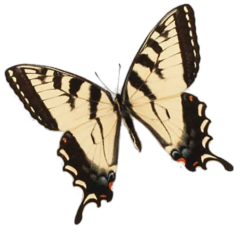

Clematis ‘Bernadine’
This stunner produces masses of large light blue flowers with contrasting red anthers. It’s amazing … Continued
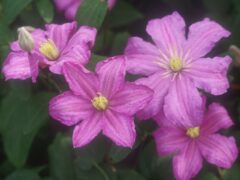
Clematis 'Comtesse de Bouchaud'
A widely popular older variety that flowers abundantly on vigorous, hardy vines plants. The large, … Continued
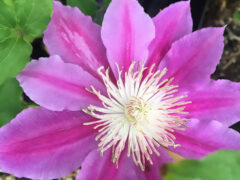
Clematis 'Dr. Ruppel'
A heavy flowering cultivar that blooms in late spring and again in late summer. This … Continued
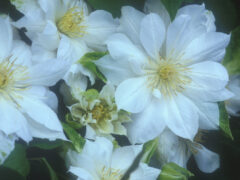
Clematis 'Duchess of Edinburgh'
Rosette-shaped double white flowers with yellow anthers. Blooms May, June and September. Pruning type 2.
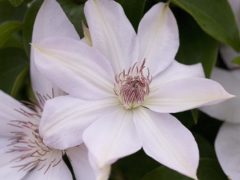
Clematis ‘Henryi’
Huge pure white flowers cover this vine heavily in May and continue with fewer blossoms … Continued
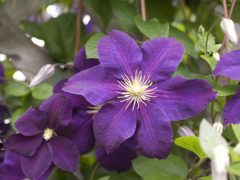
Clematis ‘Jackmanii'
The most profuse blooming dark purple Clematis, vines are covered with purple flowers in June, … Continued
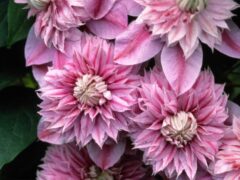
Clematis 'Josephine'
This stunning variety has flowers with 6-8 base petals which are almost bronze, tinged with … Continued
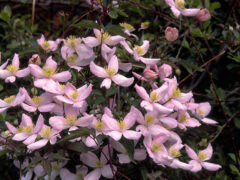
Clematis montana ‘Elizabeth’
Soft pink flowers with a vanilla scent, these vigorous growers are probably the easiest to … Continued
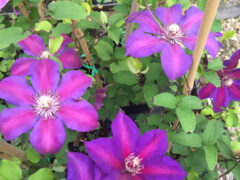
Clematis 'Mrs. N Thompson'
Large 4-6″ flowers are deep violet with a vivid scarlet stripe down the petal. Blooms … Continued
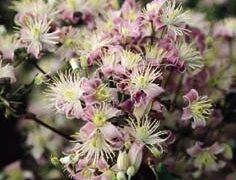
Clematis heracleifolia 'Mrs. Robert Brydon'
Bluish-white 1″ flowers in large clusters cover these extremely vigorous and very free flowering vines. … Continued
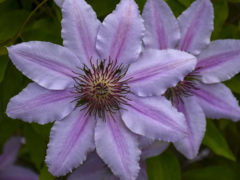
Clematis x 'Nelly Moser'
A large-flowered variety with 7″-9″ striped flowers of pale mauve with a deep purplish-pink bars … Continued
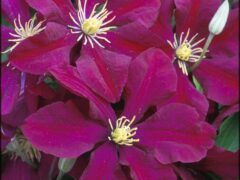
Clematis 'Niobe'
Very dark magenta-red pointed petals with gold anthers. Blooms June, August and September. A true … Continued